Watch: Dangerous Anchor Handling Process, Crew Life at Risk
Anchoring handling is a dangerous task which involves retrieving the anchor from the barge, also known as deploying the anchor. Long hours, bad weather, wet and muddy decks, hand and finger pinch hazards and proximity to heavy buoys and wires under strain are some of the risk factors involved in this process.
The video shows the extremely dangerous process of anchor handling which greatly risks the lives of seafarers. Without doubt, working on board an anchor handling vessel (AHV), is an experience unlike that of working on board most other types of ship.
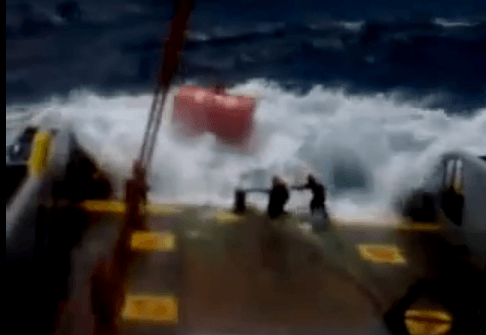
Watch the dangerous video below:
Do you know more about the video? Is it a normal routine? Let us know in the comments below.
Do you have info to share with us ? Suggest a correction
About Author
Marine Insight News Network is a premier source for up-to-date, comprehensive, and insightful coverage of the maritime industry. Dedicated to offering the latest news, trends, and analyses in shipping, marine technology, regulations, and global maritime affairs, Marine Insight News Network prides itself on delivering accurate, engaging, and relevant information.

About Author
Marine Insight News Network is a premier source for up-to-date, comprehensive, and insightful coverage of the maritime industry. Dedicated to offering the latest news, trends, and analyses in shipping, marine technology, regulations, and global maritime affairs, Marine Insight News Network prides itself on delivering accurate, engaging, and relevant information.
Latest Videos Articles You Would Like:
- Cruise Ship Damaged Due To Severe Weather, Passengers Stuck Abroad
- Archaeologists Examine 19th-Century Shipwreck Found On Canadian Coast
- Australia Stops Livestock Ship From Sailing Around Africa To Israel Amidst Houthi Attacks
- Iran Warns U.S. Of Targeting Cargo Ships Following Latest Airstrikes On Houthis
- Watch: Ukrainian Forces Destroy Russian Missile Boat In Black Sea Operation
- Two Dead After Tragic Collision Between Water Taxi And Passenger Ferry In the Philippines
Subscribe To Our Newsletters
By subscribing, you agree to our Privacy Policy and may receive occasional deal communications; you can unsubscribe anytime.



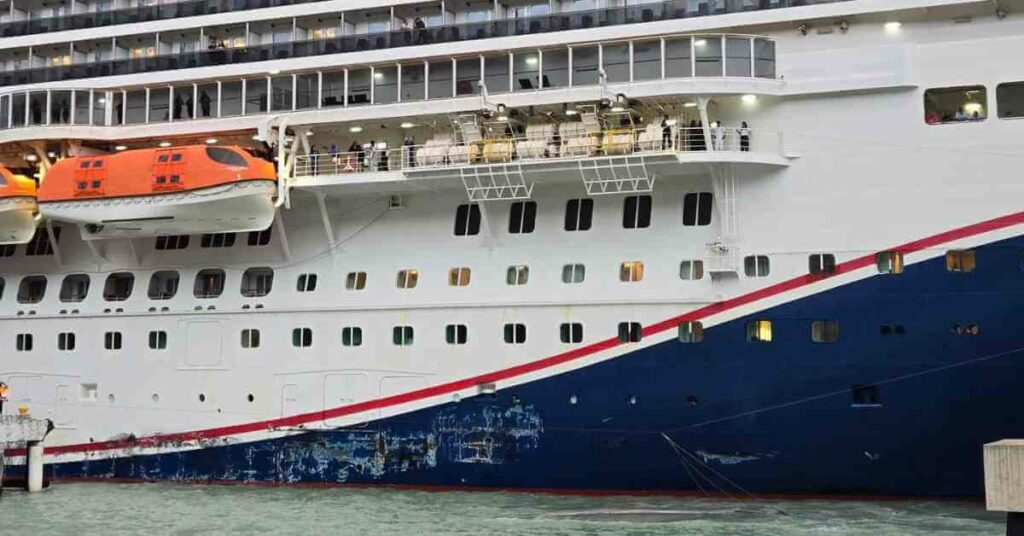
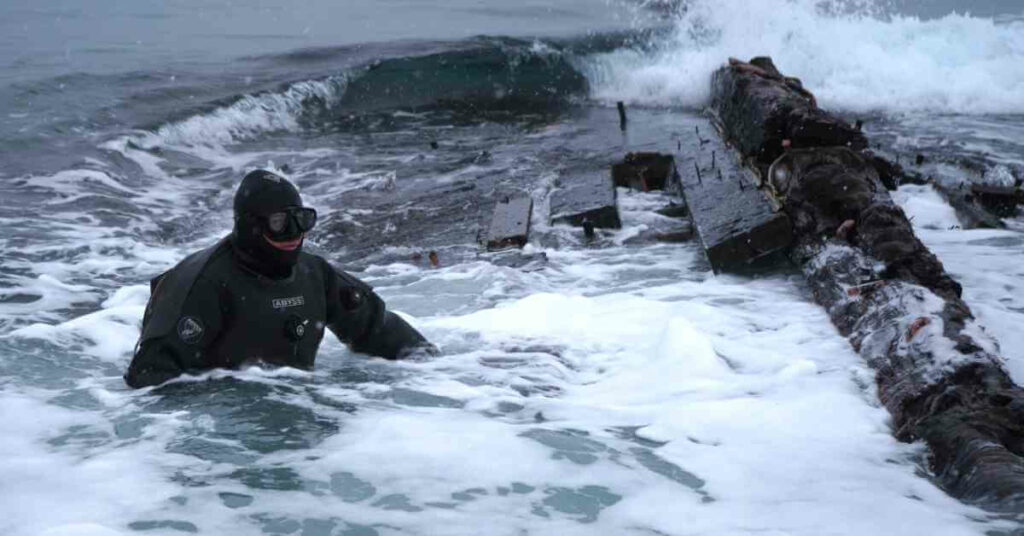
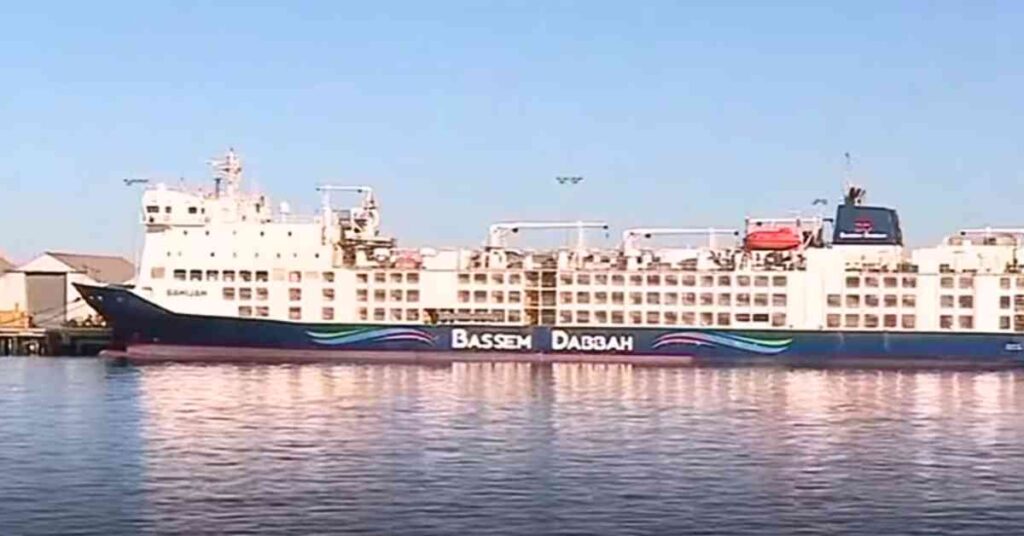





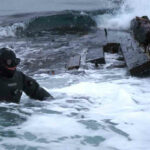




I been working on Anchor Vessel’s for 30 years now, Yep thats pretty much how it’s done.
Well, I’m working on AHTS and those guys are premiership idiots, together with Captain who gave OK to work in this conditions. Hope that no one got serious injured…
That captain will kill his crew someday!! I would have sailed into the weather and backed up to the anchor buoy.
Stern into the weather and towards the buoy is more easier but it’s not worth putting the life of the crew on the line.
It’s a normal operation on AHTS – we calling “fishing buoys”, but normally buoys are double size of that.
Yes it is normal what you see. I have 33 years experience do that very work. It’s bouy catchinh a pre laid anchor layout. That means before a rig has been towed to location the rigs anchors are laid on the seabed and then picked up when the rig arrives on location.
They were attempting to “catch ” the bouy and then pull the anchor cable onboard then pass up to the rig.
The numerous stupid comments on youtube with this is disgraceful.
So many so called experts. The bottom line is no one can be sure what happened. Soemtiems you can do everything right and you will still cop a big green one over the deck. It’s part and parcel of our job
Agree with Steve. One thing is to make a boat drill in hasty and stupid way and endanger one’s life and another is to do an ordinary seaman’s job in adverse conditions. Sea is/was always huge, deck is/was always slippery, job at sea is/was always dangerous.
As I see each crew has life line, helmet, life vest and probably knowledge and courage to do this job.
A lot of experts from VLCC or other giants, who never smells the sea from the height of 10-15 m of freeboard.
what is the salary for junior engineer on Anchor handling vessel and how promotions occur on this vessel. Is there much difference in engine room machines as comparison to the machines present on large cargo ships.
I’ve been involved on anchor’s handling and towings many of times. Worked on supply boats from deck hand to skipper. What we do see on this video it´s a very poor perfomance on lassing the buoy. I’ve worked in the North Sea for a few years based in Aberdeen, doing these kind of jobs on a very much lower vessels. On the M/V Arctic Seahorse, on a single trip we’ve moved 3 semi-submergible oil rigs, without stop. Zephyr One first, second Sedneth 701 and Dril Master. First and third with 3′ anchor’s wires, the 2nd with 6′ chain. All in about 70 fathoms water depth, what means a lot of 2′ pendants to pull out of the winch, and do coil it all on deck, by hand. Some piggy backs to remove on the process. Talking about hard work? I’ve been there. Gave us a lot of experience, to assume later the Chief Mate’s and Skipper. Wonder why many people do write bouy, instead of buoy. I’ve seen it many times on the rig move reports. Good luck to all the sea going people.
I’m from the time with pelikan hooks, manual driving deck pins, carpenter stoppers and shepperd hooks. It’s very much safer and easier with all these hydraulic gadgets. Find the anchors smaller too. We used to do lasso the buoys, by throwing (2 guys) the lasso over the buoy. We’ve find it safer than lasso the buoy’s cross.
Sorry to disturb you once again. On my comment where I did spell 3′ and 6′, what I did mean was 3” and 6”. Any experient person would understand, but just in case I do like make it clear. I do mean inches and not feet. Thank you.
It is very dangerous cases that I have never been before. This will help us to define the way to improve the safety of people who are working onboard of this this type vessel. For me, I have been involving into several times of Bollard pull test however the weather in Vung Tau sea was much nicer than this showing up. In my opinion this critical case would have the some kind of safety means for the crew members suck as safety line or removable life line that can isolate the people falling down to the sea at the rough condition..
I have only one experience in cargo ship recently. I have got an opportunity in AHTS as a 4th engineer. Is it appropriate to join AHTS.
standard practise on AHT in weather like that of New Plymouth New Zealand in 1980s
used to hold on station, headed to the sea, only with twin prop’s without thrusters. Sea on the back is easyer, but only for idiots. Pearls to pigs.
no proper seaman ship applied no proper safety equpiment used n which master had given oders to work in such harsh codition nthe movement of the vessel was in correct position
If person in charge stupid in below following stupid also Fake master that AHTS, why no maneuver head by wave if still catch buoy, after turn back if connect already with the work drum_
Yes it’s a few years since I last did this but it was commen place it was even worse before the introduction of the pop ups to hold wire in place once aboard
No its not normal situation to achieve this task, as such task need crew on deck and takes long time to be Don, even using DP mode will not help to do it as accurate as it must be in such kined of task, it must had been suspended untill the sea condition gets better, for safety of crew and the safety of operation it self .